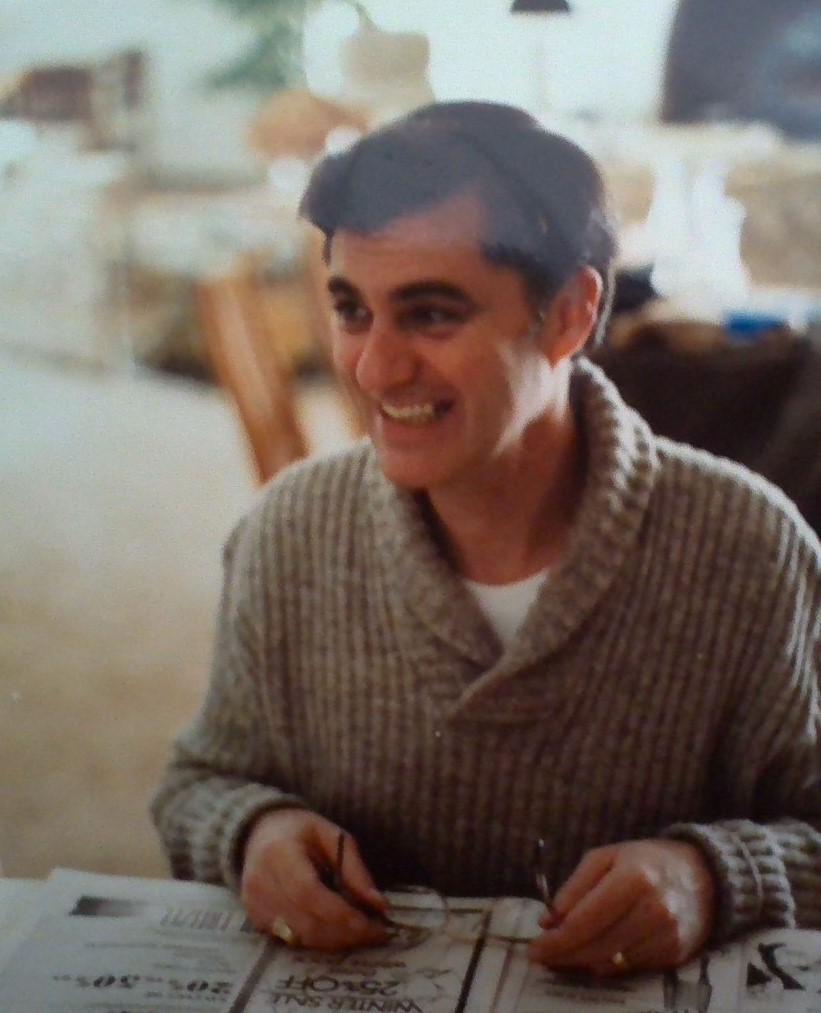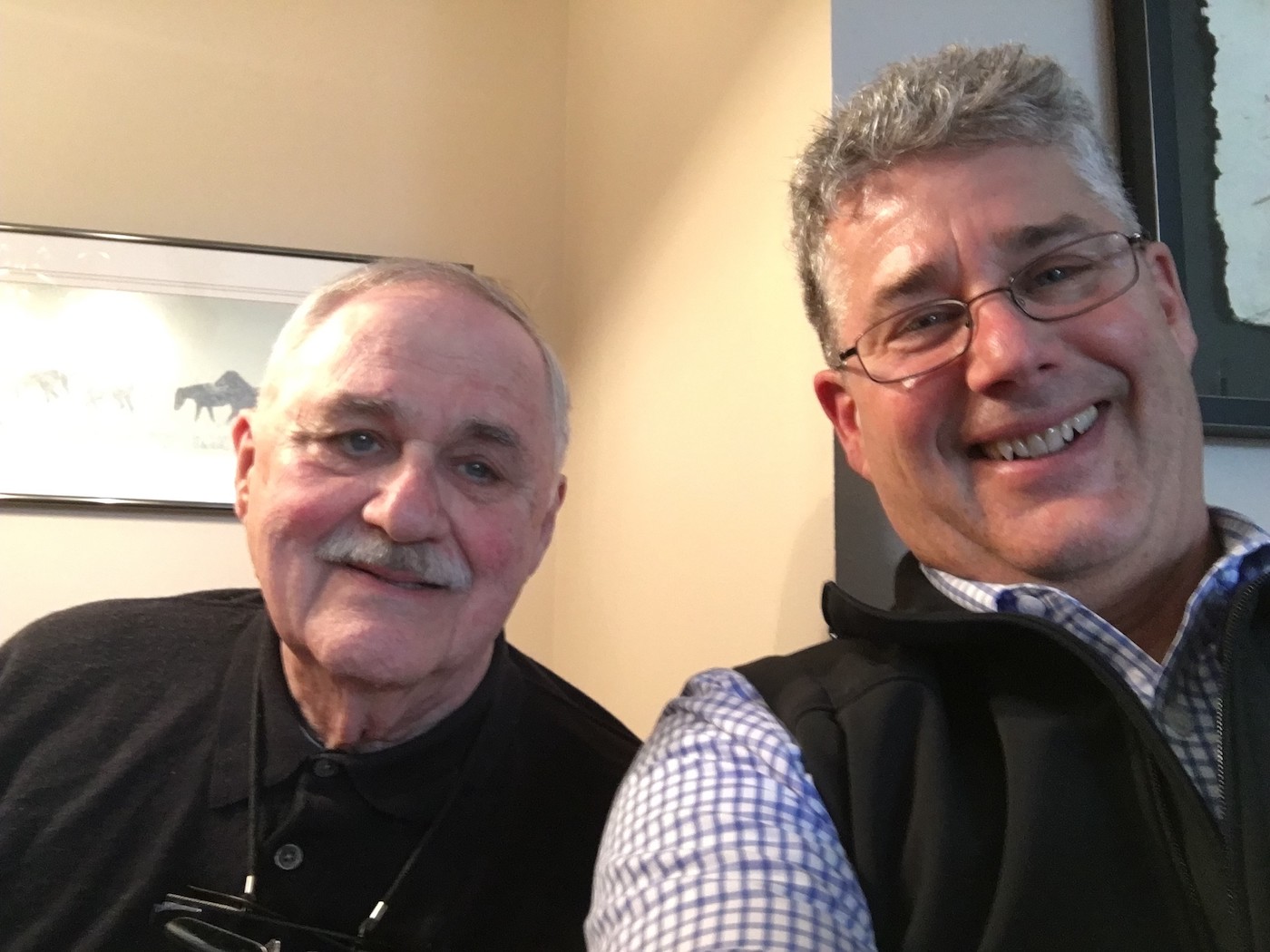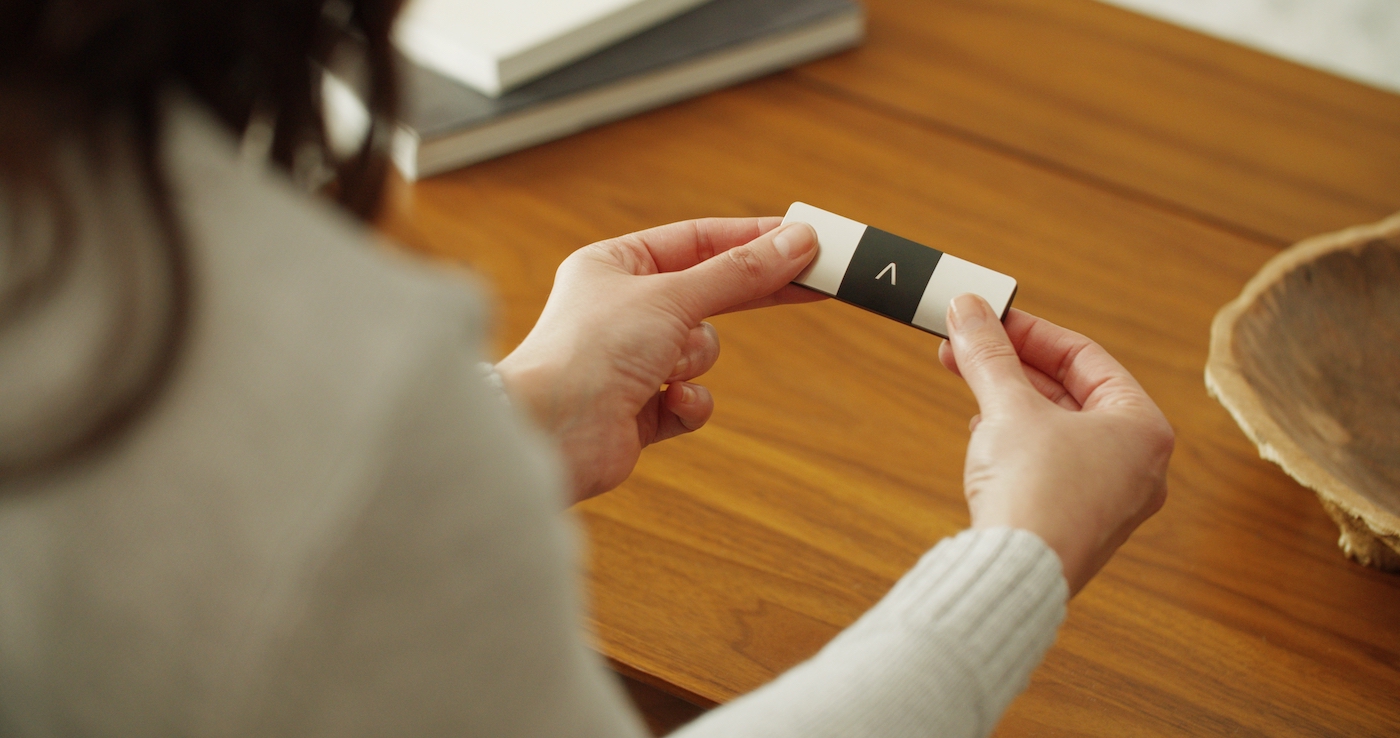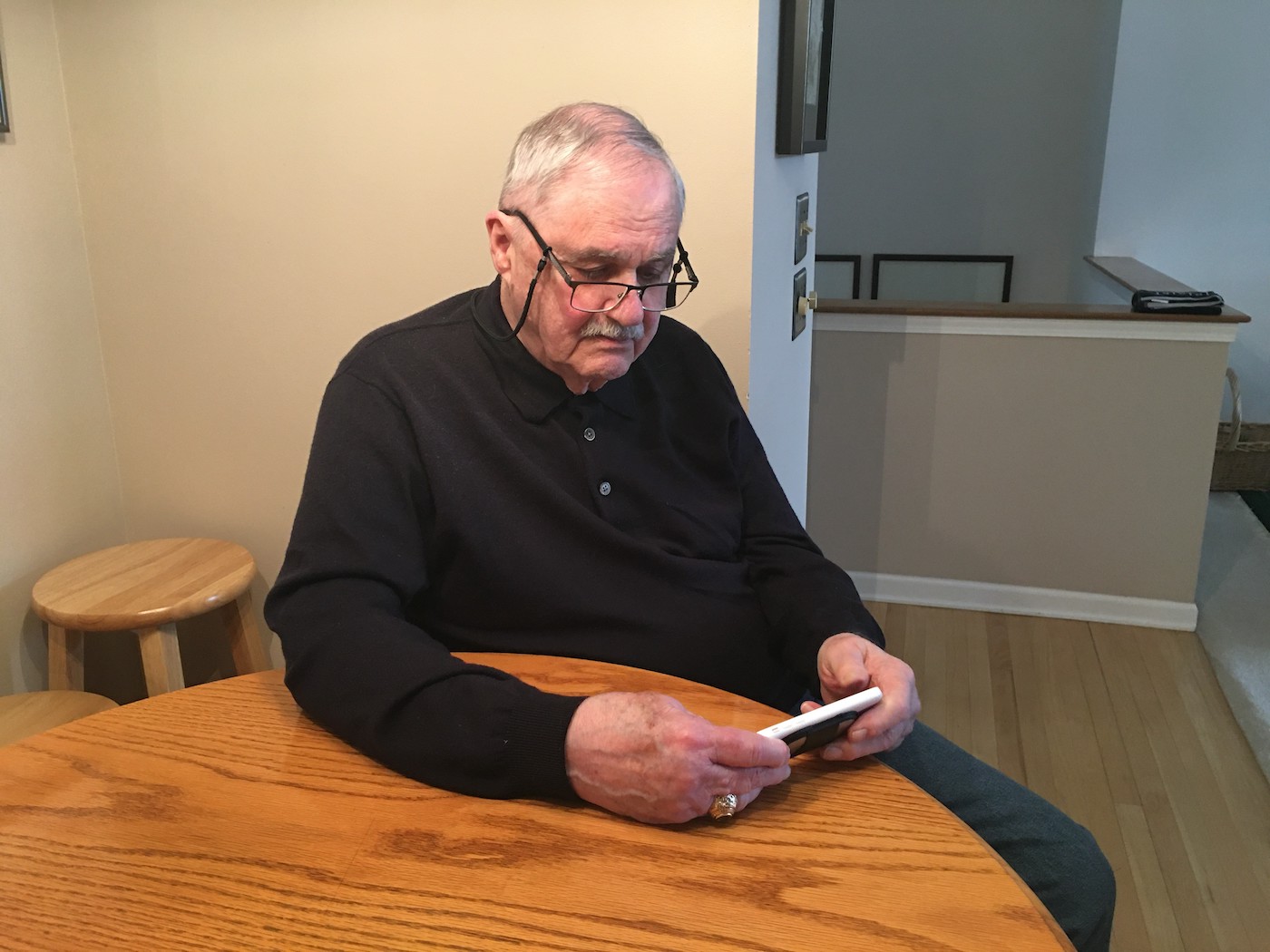When Tom Langer woke up in the middle of the night with a racing heart, he knew something was wrong. He headed to the emergency room near his home in southeastern Wisconsin, where he was diagnosed with atrial fibrillation, an irregular heartbeat that increases the risk of stroke and might lead to blood clots.
His cardiologist prescribed medication to restore his heart to a normal rhythm, but over the next few months Langer experienced several more episodes of erratic arrhythmia that left him feeling unsure if he was in immediate danger. On each occasion, he returned to the emergency room.
“I would take my blood pressure, and my blood pressure unit would give me some indication of heart rate,” he says, “but I didn’t have any idea exactly what the rhythm was.”
The Kardia Mobile 6L. Top: Tom and Mark Langer.
Langer found this uncertainty to be unnerving. Unfortunately, for the 2.7 million people in the U.S.[1] living with atrial fibrillation — and the 37.5 million worldwide[2] — it’s a common state of being. Langer’s son, Mark, is a retired general manager for ECG Ecosystems at GE Healthcare, where he was responsible for digital solutions and building partnerships in diagnostic cardiology. A few years ago, Mark offered his dad a solution to try to monitor his heart rate at home and easily tell the difference between normal heart rate, rapid heart rate and atrial fibrillation: AliveCor’s KardiaMobile personal electrocardiogram (ECG) device. It proved life-changing for Tom.
“When I first got it, I would check my heart three, four, five, six times a day,” Tom recalls. “I was really very anxious, and it was reassuring to me that I could keep looking at it and seeing the message that I was doing just fine.”
He showed the reports to his cardiologist at each appointment while, behind the scenes, Mark came to recognize the power of the data from the device.


From left: A young Tom Langer; dad and son on their sailboat; Tom Langer today.
“A single ECG by itself, whether it’s from AliveCor or an ECG machine in a hospital, has a certain amount of usefulness. When cardiologists can look at those serial ECGs over time, the story they begin to tell is far more powerful,” he says. “You can start to trend what’s happening with disease progression, what’s happening with the effectiveness of treatment.”
There was just one problem: Patients needed to bring the data from their KardiaMobile devices to appointments or email it to their cardiologists. The data, while valuable, was not part of the official patient record.
“What cardiologists are starting to say now is, ‘I can use the data between office visits or between the clinical monitoring to fill in the gaps and really understand what’s happening with my patients’ atrial fibrillation,’” explains Mark.
In his former role at GE Healthcare, Mark Langer had worked with teams to explore how to strengthen the care continuum from hospital into the home — with the goal of reducing the number of hospitalizations by providing patients with technology to better manage their cardiac conditions at home. And now GE Healthcare has identified AliveCor as a key partner in doing just that.
Tom Langer analyzes data on the AliveCor device.
Medical-grade ECGs taken by a patient outside of the hospital setting on a KardiaMobile 6L ECG device using AliveCor’s 510(k)-cleared artificial intelligence — at home or on the go — can now be delivered directly into GE Healthcare’s MUSE Cardiac Management System for physicians to view and evaluate. The workflow will allow GE Healthcare’s advanced, 510(k)-cleared ECG interpretation algorithms to analyze the data, and once the data is integrated into MUSE, the workflow extends directly into the electronic medical record. The physician can compare the patient’s most recent KardiaMobile 6L ECG to prior ECGs or other relevant results, expanding diagnostic capabilities through continuity of care.[3]
With this collaboration, physicians can access trusted patient data within their existing workflow, helping to increase their diagnostic confidence and improving the ability to effectively care for patients proactively. And patients like Tom Langer will have increased confidence in managing their own care at home or anywhere.
The integration of data ultimately aims to reduce the number of hospitalizations linked to cardiac episodes, Mark says.
“The concept of hospital-to-home has taken off,” he says. “Some of the customers that we’re talking with about the AliveCor device think they may be able to prevent their patients from having to come into the clinical environment if they can see what they need to see from AliveCor data.”
Mark says conventional medical devices prescribed by a physician, such as ECGs performed on a machine in the hospital or ambulatory monitoring, are important views into a patient’s heart rhythm. However, the remote KardiaMobile 6L ECG device offers an entirely different window for patients and physicians alike, he says, because patients can take readings regularly, anytime.
“Most of the value of prescribed monitoring is for the physician’s diagnostic purpose; it really is not intended to serve the patient in a direct way, because the patient isn’t getting real-time monitored feedback about their atrial fibrillation,” Mark explains. “The longest monitoring period is usually 30 days, which means that you might not be monitored at all the rest of the year. And between those monitoring periods, you can have a lot of change happening to your heart.”
AliveCor introduced the KardiaMobile 6L in 2019. It’s the first FDA-cleared, AI-enabled consumer ECG platform for the efficient detection of atrial fibrillation, as well as other heart rhythm conditions. The device connects wirelessly to an app on the patient’s mobile phone or tablet. The patient holds their fingers gently on the device or presses it to a spot on their leg to record their heart rate for 30 seconds — and the app instantly lets the user know if their heart rate is normal or if it detects atrial fibrillation. The data is stored, so it’s easy for users to see their heart rhythm history over time and get a better sense of their arrhythmia patterns. And as the world’s only six-lead personal ECG device, KardiaMobile 6L has been found to be more sensitive and more specific than other commercially available, single-lead personal ECGs, providing better data for doctors and patients.[4]
Tom Langer, who worked for a medical device manufacturer before retiring, never imagined he’d be a cardiac patient using a medical device — or that the son with whom he used to go on camping, sailing and curling excursions would be part of the GE Healthcare team making sure his data got into his electronic medical record. He says he is grateful for the medical advances that allow him to proactively manage his atrial fibrillation.
“In the past, the only thing I could do is take my medication and show up for my follow-up appointments,” he recalls. “The KardiaMobile gave me some measure of control and made me feel like I was participating in the process, and that made a big difference in my confidence.”
REFERENCES
[1] “Atrial Fibrillation,” American Heart Association, 2022, https://www.heart.org/en/health-topics/atrial-fibrillation.
[2] Giuseppe Lippi et al, “Global Epidemiology of Atrial Fibrillation: An Increasing Epidemic and Public Health Challenge,” International Journal of Stroke 16, no. 2 (January 19, 2020), https://journals.sagepub.com/doi/abs/10.1177/1747493019897870.
[3] Some technologies may not be available to all customers in all regions; some may be available only via prescription provided by a healthcare provider through hospital-enabled subscription.
[4] “KardiaMobile 6L Is Superior to One Lead Personal Devices,” AliveCor, 2022, https://www.kardia.com/press/press_release/kardiamobile-6l-is-superior-to-one-lead-personal-devices/.




